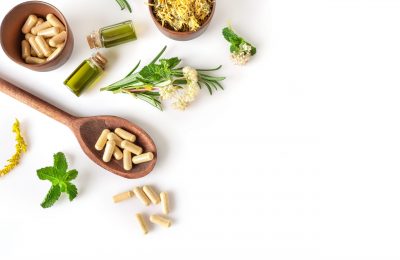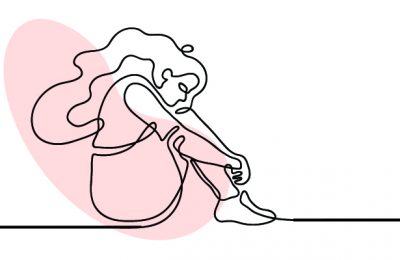How can spa operators perk up their client loyalty through retail programs? We asked five experts.
Coming Soon: A vaccine against UV?
Sunlight is known to activate biological processes in our skin that are important for our health, such as the synthesis of vitamin D. But while light is necessary for our equilibrium, over-intense UV radiation exposure leads to premature aging of the skin, also called photoaging and photo-induced aging.
Photoaging is a premature aging of the skin caused by repeated exposure to ultraviolet (UV) rays from sunlight or artificial sources. “Photo” comes from the Greek word phos, meaning “light.” We are therefore talking about skin aging caused by light. Photoaging is different from chronological aging as the damaging effects of UV rays—or artificial sources of tanning—alter the normal structures of the skin.
Sunlight not only induces the formation of free radicals, but also DNA breakdown and an inflammatory response. We know now that it has a negative impact on cell proteins, which are essential for youthful skin.
The signs of photoaging appear on the most exposed areas of the body, in particular the face, neck, and décolleté, and the back of the hands. But it can also occur on other areas that are exposed on a regular basis, such as the shoulders, arms, and legs.
Two major anti-aging innovations
We are well familiar with various strategies aiming, to some extent, to correct the visible signs of UV-induced aging. In recent months, driven by increasing demand driven by performance and visible results, two major findings emerged.
Uvaxine® technology
Based on biotechnological research, the piceid glucoside, or resveratrol diglucoside, is obtained from the Piceid by a conversion process called green chemistry. This type of process uses enzymes to perform the transformation of a molecule rather than solvents or toxic substances. There is no adverse effects on the environment or human health. The Piceid, meanwhile, is found in its natural form in wine or in the bark of Sitka spruce, a highly common species of conifer in Canada, particularly in British Columbia.
The Piceid glucoside activates natural skin defences against UV rays at the cellular and molecular levels. Its mode of action is comparable to a vaccine. Basically, it submits the cells to micro-stimuli that increases their resistance to future stresses and augments their life expectancy. This has the effect of activating and strengthening the skin’s natural defense system against UV rays, not only at the cellular level but also at the molecular level.
The skin’s natural defense system, pre-activated, is ready to intervene at any time in an optimal way at the first stimulation, to prevent damage caused by UV rays. Forming a natural shield against UVA and UVB, it guarantees two levels of protection at the cellular level (keratinocytes, fibroblasts) and molecular level (DNA and proteins).
With its novel mode of action, the Piceid glucoside, also known as the Uvaxine® allows us to enjoy the benefits of light while fighting against premature aging.
Finally, a stable vitamin C
Since the 1930s’ discovery of ascorbic acid as an anti-scurvy factor, many researchers have worked to elucidate how it works. Today, many clinical studies have shown the topical application of vitamin C leading to significant improvement of the appearance of signs of photo-induced aging. Its reputation as a cosmeceutical ingredient is well established.
However, ascorbic acid or pure vitamin C, used directly in a skincare product, is extremely sensitive to air, light, and water: it oxidizes very quickly and loses all effectiveness while becoming irritating. In addition, to formulate the optimal concentrations for cosmetology, the pH of the resulting aqueous solutions is very acidic, around 2 or 3 and sometimes even below, also leading to irritant reactions.
There are other molecules derived from vitamin C such as ascorbyl phosphate of magnesium, ascorbyl-glucoside, or ascorbyl palmitate, which are more stable forms than vitamin C itself but whose activity and/or skin penetration are well below those of ethyl ascorbic acid.
Pure ethyl ascorbic acid is now the most stable and most effective vitamin C on the market. Extremely stable chemically, colourless, and perfectly soluble in aqueous solution, it has excellent dermal bioavailability making it much more effective than pure vitamin C.
Ethyl ascorbic acid corrects existing damage by stimulating the synthesis of skin fibers and essential proteins for youthful skin while controlling pigmentation. Lines and wrinkles are significantly reduced, the skin texture is smoothed, the skin regains tone and firmness, and radiance is reactivated. In addition, powerful as an antioxidant, ethyl ascorbic acid neutralizes free radicals, preventing skin aging.
In conclusion, by combining ethyl ascorbic acid and Piceid glucoside in a single formula, it is now possible to advance a strategy that is totally innovative, comprehensive, and high-performance, aiming both to correct and prevent damage caused by the sun. This revolutionary antioxidant combination, that works in such a way that can be compared to that of a “topical” vaccine, provides unsurpassed protection against photoaging by diffusing not only free radicals but also the range of other reagent molecules known to cause damage to all cell components and DNA mutations. It also fixes the existing premature damage by stimulating the synthesis of fibers and essential proteins for youthful skin and reactivates the brightness by regulating pigmentation.
- Early and deep wrinkles
- Pigmented spots
- Telangiectasia
- Acute dryness
- Thickening and yellowing of the skin




